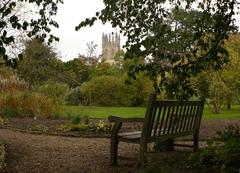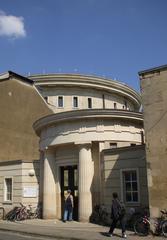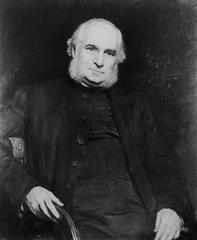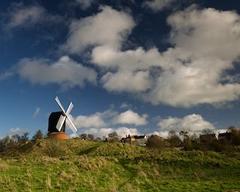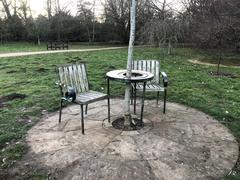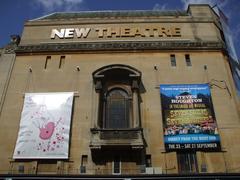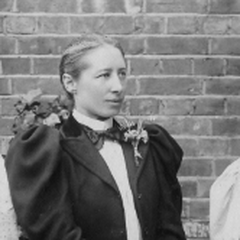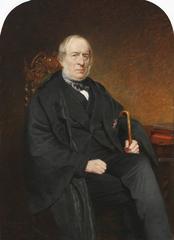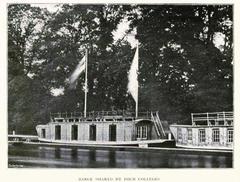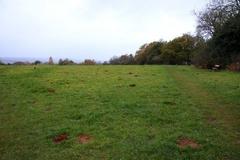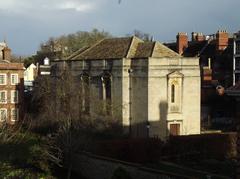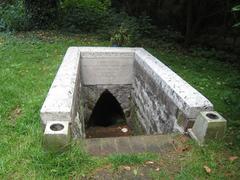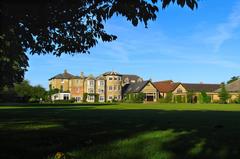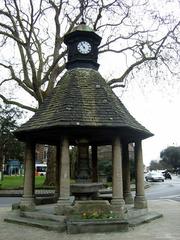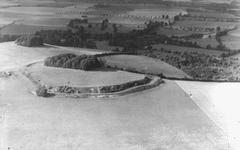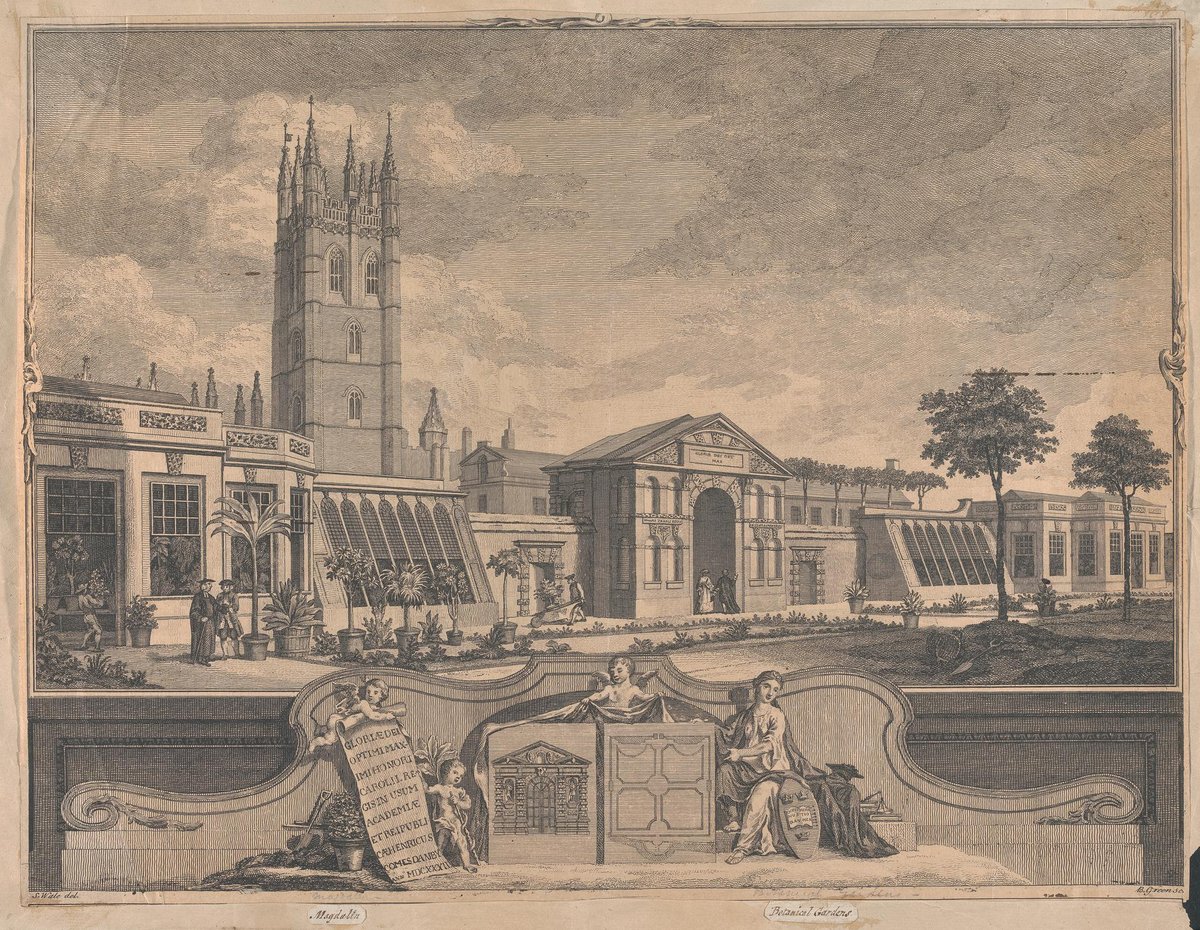
University of Oxford Botanic Garden: Visiting Hours, Tickets, and Complete Guide to Oxford Historical Sites
Date: 14/06/2025
Introduction: The Significance of the University of Oxford Botanic Garden
Nestled in the heart of Oxford, the University of Oxford Botanic Garden is the oldest botanic garden in the United Kingdom and one of the most significant scientific gardens in the world. Established in 1621 as a physic garden for the study of medicinal plants, it seamlessly merges four centuries of botanical heritage with modern research, conservation, and education. Within its compact 4.5-acre site, the garden houses more than 5,000 plant species, representing over 90% of higher plant families (Oxford Botanic Garden Guide; Wikipedia).
Visitors can explore historic walled gardens, iconic glasshouses with tropical and desert collections, themed borders like “Plants That Changed the World,” and the scientifically invaluable Herbarium Room. The garden is a global leader in plant conservation, actively working to protect biodiversity through seed banking and international partnerships, particularly with regions such as the Mediterranean Basin, Ethiopia, and Japan (OBGA Conservation; Oxford Research Impact).
Located within walking distance of Oxford’s city center and renowned sites like the Ashmolean Museum and Bodleian Library, the garden offers a harmonious blend of natural beauty, scientific discovery, and cultural enrichment. Whether you are a plant enthusiast, history lover, family, or student, you’ll find guided tours, special events, and educational programs to engage all ages. Enhance your visit with resources such as downloadable maps and the Audiala app for self-guided tours and updated event information (Audiala app).
This guide provides all the essential information you need to make the most of your visit to one of Oxford’s most treasured and dynamic green spaces.
Contents
- Introduction
- Practical Visitor Information
- Opening Hours
- Ticket Prices
- Getting There
- Accessibility
- Guided Tours & Events
- Highlights & Attractions
- Historical Foundations
- Notable Botanists
- The Glasshouses & Arboretum
- Conservation Initiatives
- Garden Layout & Botanical Collections
- Walled Garden
- Glasshouses
- Lower Garden
- Specialty Borders
- Herbarium Room
- Research, Education, & Community Engagement
- Visitor Tips & Nearby Attractions
- FAQs
- Sustainability & Environmental Stewardship
- Conclusion & Call to Action
Practical Visitor Information
Opening Hours
- Daily: 10:00 AM – 5:00 PM (last admission 4:30 PM)
- Seasonal Variations: Check the official website for up-to-date hours, holiday closures, and special events.
Ticket Prices
- Adults: £6.00
- Seniors (65+): £5.00
- Students (with ID): £4.00
- Children under 16: Free
- Family & Group Tickets: Available
- Purchase: Online via the official site or at the entrance.
Getting There
- Location: Central Oxford, near High Street and St Giles’.
- Transport: Easily accessible by foot, bicycle, or public transport. Closest bus stops are on High Street; no on-site parking—use public transport or park-and-ride.
- Bicycle Storage: Limited racks at the entrance.
Accessibility
- Wheelchair Accessible: Majority of paths are paved and suitable for wheelchairs and pushchairs.
- Facilities: Accessible toilets; assistance dogs welcome.
- Support: Contact the garden ahead for tailored accessibility needs (Great British Gardens).
Guided Tours & Events
- Guided Tours: Weekly, offering insights into the garden’s history and plant collections.
- Special Events: Workshops, exhibitions, and family activities are held throughout the year. See the events calendar for details.
Highlights & Attractions
Historical Foundations
Founded through Sir Henry Danvers’ donation, the garden was established as a physic garden in 1621. Its walled design provided a controlled space for early scientific study, shaping botanical research and education at Oxford (Roots and Maps).
Notable Botanists & Scientific Contributions
- Robert Morison: Pioneered plant taxonomy based on morphology.
- Johann Dillenius: Advanced the study of mosses and lichens.
- Charles Daubeny: Integrated chemistry and geology into botany.
Glasshouses & Arboretum
- Glasshouses: Seven climate-controlled houses showcase tropical, arid, and carnivorous plant species (OBGA Guide).
- Arboretum: Acquired in 1963, the Arboretum expands conservation efforts across 130 acres, featuring rare trees and shrubs.
Conservation Initiatives
The garden’s conservation work is vital for global biodiversity, focusing on rare and endangered species, seed banking, and international projects with partners in Japan, Ethiopia, and beyond (OBGA Conservation; Oxford Research Impact).
Garden Layout & Botanical Collections
Walled Garden
- Design: Oldest section, geometric beds, Danby Gate entrance.
- Collections: Taxonomic beds (APG classification), medicinal and geographic beds, literary garden, historic Euphorbia and “1648” collections (OBGA Collections).
Glasshouses
- Zones:
- Rainforest House (tropical species)
- Arid House (succulents and cacti)
- Carnivorous Plant House
- Water Lily House
- Cloud Forest House
- Conservatory (seasonal displays)
- Note: Some closures may occur for maintenance (OBGA Visit).
Lower Garden
- Setting: Riverside, open lawns, ornamental beds.
- Features: Rock garden, herbaceous border, Merton border, “Plants That Changed the World” beds, gin border, orchard, and the “His Dark Materials” literary bench (OBGA Guide).
Specialty Borders
- Themes: Plants that changed civilization, gin botanicals, literary references.
- Conservation: Rare and endangered species supported by seed banking and research (OBGA Collections).
Herbarium Room
- Resource: Houses over one million specimens, including more than 35,000 type specimens, supporting global botanical research (Oxford University Herbaria).
Research, Education, & Community Engagement
Scientific Research & Innovation
The garden is a center for plant science, from evolutionary genetics and taxonomy to digitization of collections (BRAHMS database) and ex situ conservation (OBGA Science; Plants400).
Education & Public Programs
- Workshops & Tours: Regularly scheduled for all ages (Sixes Cricket Blog).
- School Programs: Curriculum-aligned sessions, hands-on experiments, and internships.
- Community Outreach: Partnerships with local groups and citizen science initiatives.
Digital Resources
- Virtual Tours & Online Workshops: Extend learning beyond the garden.
- Audiala App: Interactive maps, audio guides, and exclusive content for self-guided experiences (Audiala app).
Cultural Heritage
The garden, established on a site formerly used as a Jewish cemetery, is a cultural landmark as well as a scientific one, with interpretive signage and historical borders reflecting Oxford’s botanical legacies (Wikipedia).
Visitor Tips & Nearby Attractions
- Best Times: Spring and summer for peak blooms.
- Photography: Permitted for personal use; commercial photography by arrangement.
- Amenities: On-site café, gift shop, free Wi-Fi.
- Nearby Sites: Bodleian Library, Ashmolean Museum, Christ Church College, Pitt Rivers Museum.
- Recommended Itinerary: Combine your garden visit with a tour of Oxford’s historic colleges and museums for a full cultural day.
Frequently Asked Questions (FAQs)
Q: What are the opening hours?
A: Daily, 10:00 AM – 5:00 PM (last admission 4:30 PM); check the website for seasonal changes.
Q: How much do tickets cost?
A: Adults £6.00, concessions £4.00–£5.00, children under 16 free.
Q: Is the garden wheelchair accessible?
A: Yes, most areas are accessible; some historic features may be challenging.
Q: Are dogs allowed?
A: Only assistance dogs permitted.
Q: Are guided tours and events available?
A: Yes, check the events calendar for schedules.
Q: Can I take photos?
A: Yes, for personal use.
Sustainability & Environmental Stewardship
The garden is committed to environmental responsibility, supporting Oxford University’s net zero carbon and biodiversity goals by 2035. Practices include peat-free horticulture, restoration of native species, and compliance with environmental standards (OBGA Sustainability).
Conclusion & Call to Action
The University of Oxford Botanic Garden is more than a tranquil green retreat—it is a dynamic center for botanical science, conservation, and public engagement. As Britain’s oldest botanic garden, it offers visitors an immersive experience in history, plant diversity, and scientific innovation. With accessible facilities, affordable tickets, and a central location near Oxford’s most famous landmarks, it’s a must-visit for tourists and locals alike.
Plan your visit today by checking the latest updates and booking tickets through the official website. Download the Audiala app for interactive tours and additional resources, and follow the garden on social media for event news.
Experience the intersection of history, science, and nature at the heart of Oxford’s academic and cultural community.
Sources and Official Links
- Oxford Botanic Garden: Visiting Hours, Tickets, History, and Highlights
- Oxford Botanic Garden Visiting Hours, Tickets, and Must-See Attractions: A Complete Guide
- Oxford Botanic Garden Visiting Hours, Tickets, and Botanical Highlights
- Explore the Oxford Botanic Garden: Visiting Hours, Tickets, Attractions, and Educational Insights
- Wikipedia - University of Oxford Botanic Garden
- Oxford Research Impact - Conserving Biodiversity Hotspots


